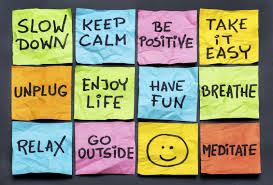Step by Step Reducing Stress
These days, it seems like everyone lives under a shadow of constant stress. Work, family, and social obligations keep us moving at a frantic pace, and we live in a culture that takes pride in high levels of productivity and minimal hours of sleep, seemingly dictating that we must feel stressed in order to feel accomplished. As a country, we also have some of the highest rates of chronic diseases in the world. Are these two phenomena related? Can we lower our rates of chronic diseases by lessening our levels of stress?
Such was the question of the hour at Avenues to Wellness’ most recent Speaker Series presentation. Sid Garza-Hillman, certified nutritionist, author, and health coach, brought to the audiences’ attention one specific example of the relationship between chronic stress and chronic disease: blood glucose. Stress causes the body’s cells to release glucose, which is used as energy, back into the bloodstream so that we may readily mobilize in case of an emergency, preparing us for the classic “fight or flight” response. Insulin, on the other hand, facilitates transfer of blood glucose into the body’s cells. Failure of insulin to perform its bodily function is commonly known as Type 2 diabetes. But with stress and insulin playing competing roles, could it be true that the prevalence of stress plays a role in the high incidence of Type 2 diabetes among Americans? Garza-Hillman argues that it does, and uses this logic to promote small lifestyle changes that are accompanied by little to no stress.
Dramatic changes to your daily routine, even those that are largely healthful, may be detrimental to overall health because of the stress they add to your life. Ask yourself, “Is adding a one mile run to my daily routine a source of stress or of stress relief?” The same logic applies to dietary changes. Many diets promote large-scale overhauls or the removal of various foods. But we do not eat solely to obtain nutrients – meals are a source of enjoyment, a byproduct of family tradition and culture, and a space in our days in which to share time with friends and loved ones. To make a marked change to our eating routines is stressful, and that is one reason why the vast majority of diets fail.
The solution? Make lifestyle changes that align with a series of discreet, attainable goals – “small steps.” What constitutes a “small” step may vary dramatically in size from person to person, completely dependent upon the ability of that individual to create a change in their lifestyle. While it may take you longer to achieve your goal, gradual changes are more likely to yield lifelong improvements in health and provide a built-in defense mechanism against abandoning your goals. When the change becomes too stressful, simply take one “small step” backwards instead of giving up.
This month’s challenge: Think of a goal you have been wishing to attain. What are some small steps you can take to achieve it?
Avenues to Wellness was created especially for Inland Mendocino County by the Frank R. Howard Foundation. Visit www.avenuestowellness.org or email atwforhealth@gmail.com for more information and for the upcoming ATW Speaker Series presentation at the Willits Senior Center the first Tuesday of each month.
###
Emily is currently serving as a Community HealthCorps Educator for the Alliance for Rural Community Health in Mendocino County. She is a recent graduate of the University of Wisconsin - Madison, majoring in Kinesiology, and is attending medical school in the fall at the University of Arizona - Phoenix."

